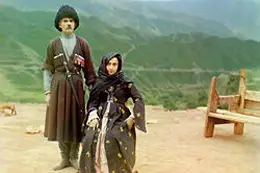The Kumyk people have held a number of non-violent campaigns in an effort to get the attention of the Russian government and the regional Dagestan government. However, their protests have largely been ignored. The Kumyks want more autonomy and the preservation of their language and culture. Given the fact that the environment in Dagestan is quite hostile, any additional conflict could escalate issues and lead to more serious problems for the Russian Republic. This led the Society for Threatened People to appeal to the government to stop ignoring the protests and to address the issues that had been raised. A number of people have already been killed in the country as a result of bombings, which are blamed on Islamist groups and quite a number of people have been reported as missing.
There are 431,700 Kumyks in the Republic of Dagestan. This makes the group the 3rd largest in Dagestan. The Kumyks live in the lowland areas, between the foothills of Dagestan and the Caspian Sea. Kumyk is also written as Kumuklar, Qumuq, Kumyki and Kumuk. The language was initially written using the Arabic alphabet. This was changed to the Latin alphabet between 1928 and 1938. Since then, the Cyrillic alphabet is used to write the language. Currently, there is one newspaper that prints out its issues using the Kumyk language. Kumyk is a Turkic language that falls under the Kypchak branch of languages. It has been influenced by other languages such as Dargwa, Azeri and Russian. Kumyk speakers can also be found in Kazakhstan and Turkey.
Most Kumyks are Sunni Muslims. Islam spread among the Kumyks in the 8th and 12th centuries. Before that, Christianity was widespread among the upper class. Shamanism, which was widely practiced in the past, is practically non-existent presently. Islam replaced the pagan beliefs that community members had before. Islam influenced the culture of the people. For instance, marriage and divorce was governed by the Sharia law. Most people got married at the age of 15 or 16 and bride price had to be paid. Weddings had the mark of grandeur and a lot of people were normally invited.
